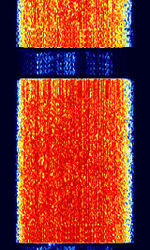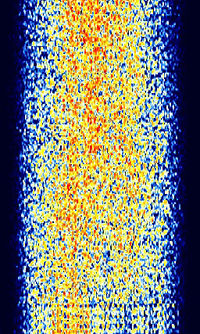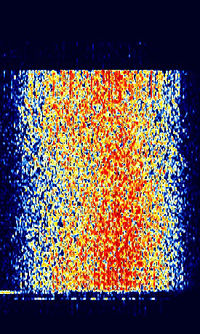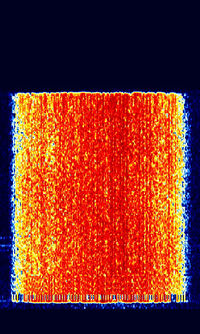MIL-STD-188-110 Serial
MIL-STD-188-110 Serial is a US Department of Defense standard for HFHigh Frequency (3-30 MHz) Communications, Serial PSKPhase-Shift Keying mode. The mode was officially specified in the "Military Standard Interoperability and Performance Standards for Data Modems" in 1991. The original waveform was first outlined in the MIL-STD-188-110A standard, and has since remained over the next two revisions, the current one being MIL-STD-188-110C W/ Change 1. This serial waveform is very popular for its HFHigh Frequency (3-30 MHz) performance and robustness. This mode is almost identical to STANAG 4285, but has some differences that keeps them from being interchangeable.
Characteristics[edit]
This mode can transmit both data and voice with a range of interleaving and speed modes for optimal propagation. The signal has a constant baudBaud (unit symbol Bd) is the unit for symbol rate or modulation rate in symbols per second. of 2400 bdBaud (unit symbol Bd) is the unit for symbol rate or modulation rate in symbols per second., with user bpsBits per second (bps) ranging from 75bps to 4800 bpsBits per second (bps). Short and long interleaving exists for all speeds except 4800bps, where interleaving is turned off. In addition, for the transmission of digital voice, 2400bps short interleaving must be used. The center tuning frequency for this mode is 1800 HzHertz (Hz), unit of frequency, defined as one cycle per second (1 Hz).. It can also operate in short bursts, as well as long data links.
This signal uses a 8-PSK8-Phase Phase-Shift Keying (3 bits per symbol) Modulation tri-bit method. 150, 300, and 600bps use 1-bit (BPSKBinary Phase-Shift Keying (1 bit per symbol)). 1200 uses 2-bits (QPSKQuadrature Phase-Shift Keying (2 bits per symbol)), and 2400 and 4800 use 3-bits (8PSK8-Phase Phase-Shift Keying (3 bits per symbol)). 75bps uses a special 2-bit QPSKQuadrature Phase-Shift Keying (2 bits per symbol) method called Walsh Modulation.
There are also a number of variants of the MIL STD Serial signal. One is a QPSK Hybrid (called MIL-STD-188-110A-MOD by some), where a 40 channel OFDMOrthogonal Frequency-Division Multiplexing QPSKQuadrature Phase-Shift Keying (2 bits per symbol) preamble is added to the signal. Another is the Système 3000 Variant from Thales, used in Thales HFHigh Frequency (3-30 MHz) Modems. The primary difference in this variant is the preamble at the beginning.
Mode Samples[edit]
| Long Interleave | Short Interleave |
|---|---|
| |
|
| |
|
| |
|
| |
|
| |
|
| |
|
* 300S signal recorded is a Thales Système 3000 Variant. Look below
| 4800 No Interleaving | 2400S Voice TXTransmit | Thales Système 3000 |
|---|---|---|
Additional Samples[edit]
- ARQAutomatic Repeat reQuestAutomatic Repeat Query Bursts
- TXTransmit at 600bps, operators can be heard speaking at some points
- RYRYRY DE RC97
- 2400bps test "THE QUICK BROWN FOX JUMPS OVER THE LAZY DOG 0123456789"
- ALEAutomatic Link Establishment and chinese operators, DE BRO45, sending at 600bps 5 symbol code words.
Decoding Software[edit]
- Hobby Level Software
- Professional Software
Video Examples[edit]
Additional Links[edit]
- RadioScanner.RU MIL-STD 188-110A 2400
- WAVECOM Database: MIL-188-110A
- Military Standard: Interoperability and Performance Standards for Data Modems MIL-STD-188-110A
- Department of Defense Interface Standard: Interoperability and Performance Standards for Data Modems MIL-STD-188-110B
- Department of Defense Interface Standard: Interoperability and Performance Standards for Data Modems MIL-STD-188-110C W/ CHANGE 1



